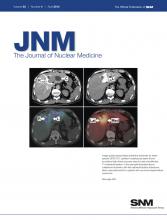B.J. Manaster, C.A. Petersilge, C.C. Roberts, C.J. Hanrahan, and S. Moore
Philadelphia, PA: Lippincott Williams and Wilkins, 2010, 1,155 pages, $339
This comprehensive atlas and textbook covers nontraumatic and non–sport-related musculoskeletal imaging. The more than 1,100 pages and 4,500 images provide a rich reference designed for radiologists, medical students, technicians, and general practitioners who wish to become proficient in the use of different imaging modalities in musculoskeletal disease management. With more than 300 diagnoses—all featuring key facts, clinical information, carefully selected images, and differential diagnoses—this reference is a valuable guide to the specifics of nontraumatic musculoskeletal diseases, including arthritis, osseous tumors, soft-tissue tumors, congenital and developmental abnormalities, and skeletal dysplasia, as well as infection and systemic diseases with musculoskeletal involvement. Probably the biggest asset of this book is its rich atlas of images, which include a fairly complete collection of the diverse manifestations of important musculoskeletal pathologies on imaging. Coupled with a complementary online version, “eBook,” which is continually updated and includes searchable content, hundreds of additional images, and expanded diagnostic tips and references, this volume can be appreciated as a useful reference textbook for musculoskeletal disease imaging.
The textbook is conceptually organized into 12 main pathologic sections (e.g., arthritis, osseous tumors and tumorlike conditions, and metabolic bone disease), with a detailed table of contents further divided into specific diagnoses, allowing for easy orientation within a particular chapter and saving valuable time. Each section introduces a different pathology and appropriately starts off with bulleted text in “key facts” boxes, followed by a more detail-oriented introduction with accompanying official disease classification. Integrated into this layout are numerous radiologic images that illustrate the presented information, providing a good overview of the diagnostic techniques relevant to musculoskeletal disease imaging. Detail-oriented graphics are placed side by side with the radiologic images, allowing for a better understanding of classic radiologic scans by focusing on relevant fine points. In addition, most of the images have arrows indicating the most important pathologic findings, which are then explained in greater detail in the side columns. Even though some unusual musculoskeletal diseases are also covered, a big advantage of this reference book is its focus on ordinary disease topics, with an extensive number of supplementary images.
The most valuable contribution for a nuclear medicine physician in this textbook is the rich teaching material in the form of plain films, MRI scans, and CT images of superior quality, which can aid in the understanding and comparison of these radiologic modalities with nuclear medicine studies. The ability to compare radiologic and nuclear medicine studies is especially important in the imaging community of today, in which the rapid expansion of hybrid imaging technology, including the already well-established PET/CT, the currently growing PET/MRI, and other fusion combinations, requires competence in multiple modalities. Thus, more than ever before it is of the utmost importance for nuclear medicine physicians to be completely knowledgeable in the interpretation of classic radiologic scans. This textbook enables the nuclear medicine physician to acquire greatly expanded knowledge and capabilities in the area of nontraumatic musculoskeletal disease imaging analysis.
One of the most interesting chapters, in section 2, pertains to osseous tumors and tumorlike conditions (e.g., Paget disease and Langerhans cell histiocytosis). Here, the authors cover a wide variety of tumors, detailing the structural changes that distinguish benign from malignant tumors in radiographs and CT scans. MRI sequences are thoroughly discussed, and the explanations are then illustrated with relevant sequences showing osseous structural changes, soft-tissue extension, necrosis, and other changes to the various compartments, which may also be predictive of grade. Although 18F-FDG PET/CT is helpful in revealing the biologic activity of osseous lesions, knowing the findings on CT will help the reader better differentiate benign from malignant musculoskeletal tumors. To the nuclear medicine physician, the excellent explanations of CT and MRI studies provided in this reference will truly enhance the interpretation of different fusion modalities.
Other topics of special relevance to the field of nuclear medicine include chapters dedicated to osteomyelitis and metabolic bone disease (e.g., osteoporosis) and a brief section dedicated to radiation-induced effects on the skeleton. For example, when nuclear medicine physicians are reviewing 3-phase bone imaging for osteomyelitis, one of the hardest things for them is to understand the accompanying plain radiographs, CT scans, and MRI scans. The high quality of the images and the comprehensible explanations provided in this textbook may prove instructive for everyday comparison with the results of nuclear medicine studies.
Diagnostic Imaging has some limitations. For example, pathologic radiographs are not accompanied by images depicting normal anatomic structure, which would have allowed for easier understanding and better interpretation of the material. Furthermore, the introductory text describing the various musculoskeletal pathologies mentions several measurements important for diagnostic classification (e.g., mean size of lesions in centimeters and variations in bone angulation in skeletal deformities), but these measurements and their derivation are not explained. Notwithstanding these small shortcomings, this textbook is an excellent resource and would be a valuable asset both for the established radiologist and for any novice to the field of musculoskeletal radiology.
Footnotes
Published online Feb. 13, 2012.
- © 2012 by the Society of Nuclear Medicine, Inc.







